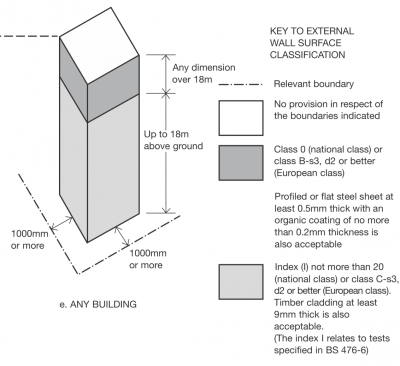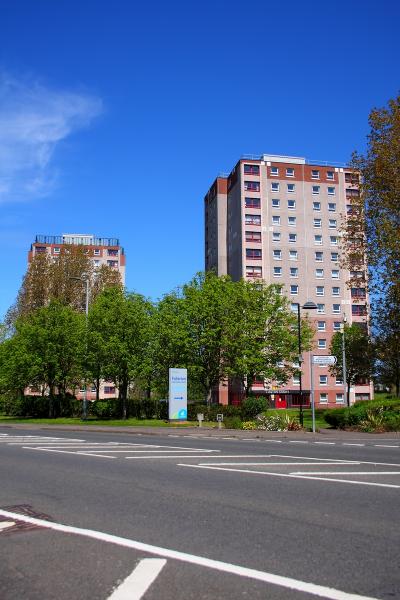'Class 0' and the End of Government’s Guidance on Building Regulations
Guest authorJonathan Carrington is a Senior Associate at Reynolds Porter Chamberlain LLP in London. All views expressed in the post are his own and all information and opinions he provides in the post should not be relied upon or be used as a substitute for advice on how to act in a particular case.
Posted:
Time to read:
A key issue following the Grenfell tragedy is the inadequacy of the Government’s technical guidance on which materials may be used on the external walls of high-rise buildings in England, and the wider question whether Government should be responsible for producing Building Regulations technical guidance.
Approved Documents
Pursuant to section 6 of the Building Act 1984, the Secretary of State for Housing, Communities and Local Government approves and issues ‘Approved Documents’ for the purpose of providing practical technical guidance with respect to the requirements of the Building Regulations. The Secretary of State is advised by the Building Regulations Advisory Committee (BRAC) on making Building Regulations and setting standards for the design and construction of buildings.
The statutory technical guidance in Approved Documents is not mandatory and failure to comply with it does not of itself render a builder liable to any civil or criminal proceedings; and builders are free to find other ways to comply with the Building Regulations.
If, however, a builder fails to comply with the guidance in Approved Documents there is a statutory presumption that she has contravened the Building Regulations; and conversely, if a builder complies with Approved Documents there is a statutory presumption that she has not contravened the Building Regulations (s7 of Building Act 1984).
Approved Document B (Fire Safety)

An example of Approved Document B guidance, concerning the external wall surface classification
From Approved Document B, Vol.2 B4, p. 95
Part B of the Building Regulations sets out the requirements for fire safety and Approved Document B (‘ADB’) provides guidance with respect to those requirements. A Government study into the usability of ADB in February 2017 revealed that most of the building industry relies on this guidance to help them comply with the Building Regulations, and ADB was the most used Approved Document.
The principal building regulation requirement in relation to the external walls of buildings is requirement B4 (1) which provides ‘the external walls of the building shall adequately resist the spread of fire over the walls and from one building to another, having regard to the height, use and position of the building’.
Paragraph 12.6 (External surfaces) of ADB provides practical guidance on how to comply with requirement B4 (1) and provides ‘the external surfaces of walls should meet the provisions in Diagram 40’. Diagram 40 (Provisions for external surfaces or walls) provides that the external surfaces of walls of buildings 18m or more in height should be ‘Class 0’ (national class) or class B-s3, d2 or better (European class).
Class 0

Therefore, according to the Government’s official guidance, Class 0 materials adequately resist the spread of fire over the external walls of high-rise buildings. Class 0 is, however, not a fire classification identified in any British Standard test; it is a creature of statute and ADB.
Class 0 is an old, out of date national product classification which is based on two, old small-scale tests on individual products or materials (BS 476-6 and -7), which only deal with the spread of flames over the surface of a material or the surface of a composite product.
Notably, Class 0 and the BS 476 tests do not measure the combustibility of a material or the combustibility of the core of a composite (or sandwich) material such as an Aluminium Composite Material (ACM) cladding panel.
Combustible materials can therefore achieve a Class 0 classification, and this is the reason there is so much combustible ACM cladding on high-rise buildings in England.
The Government has now banned combustible cladding on high-rise buildings by amending Regulation 7 of the Building Regulations and ADB so that materials which become part of an external wall of a high-rise building now have to be of European Classification A2-s1, d0 (i.e. of limited combustibility) or Class A1 (non-combustible).
A key question, however, is, Why did the Government – and their advisors, BRAC – take so long to update ADB and replace Class 0 with the more up to date European classification system for combustibility set out in British Standard EN 13501? More particularly, why did it take so long to bring England in line with international norms and those of the rest of the EU and Scotland?
Scotland and previous investigations and recommendations to Government

Garnock Court tower (right), in 2018, was the site of a fatal fire in 1999 in Irvine, Scotland
© Copyright Ian Rainey and licensed for reuse under the CC BY-SA 2.0 licence
There has been very limited use of combustible ACM cladding material on high-rise buildings in Scotland because its equivalents of ADB (‘Technical Handbooks’) have provided, since 2005, that the external wall cladding on high-rise domestic buildings has to be constructed of non-combustible products. Most European countries also do not allow the use of combustible cladding on high-rise buildings.
Scotland updated its guidance in 2005 after a fatal fire at Garnock Court in Irvine on 11 June 1999 and a Select Committee on Environment, Transport and Regional Affairs highlighted that the small-scale tests used to determine the fire safety of external cladding systems were not fully effective. The Select Committee made the eerily prophetic statement that, ‘We do not believe that it should take a serious fire in which many people are killed before all reasonable steps are taken towards minimising the risks.’
As a result of these recommendations, Scotland changed their technical guidance and required the external wall cladding used on the external wall of high-rise domestic buildings to be constructed of non-combustible products.
England made some changes to ADB in response to the Select Committee’s recommendations but crucially, as a recent BBC documentary has revealed, despite subsequent investigations and recommendations, the Government did not change the guidance in ADB that Class 0 materials could be used on the external wall of a high-rise building.
Current Recommendations
In her Independent Review of Building Regulations and Fire Safety (‘Building a Safer Future’ (May 2018)), Dame Judith Hackitt concluded that ‘It is not realistic to expect guidance to stay ahead of changing practice if it is owned by government, especially in an industry which is as fragmented and diverse as the built environment sector’. She recommended that Government should write the Building Regulations and set the outcomes to be achieved, and the construction industry should produce the detailed guidance to meet these outcomes. She has also recommended that BRAC be replaced by ‘a new structure of advice and assurance’, and this new body should be guided by another new body, the Joint Competent Authority (JCA).
Whether or not the construction industry should be responsible for producing technical guidance is controversial, particularly since Government guidance seems to be responsive and adequate in Scotland and other EU countries. However, the endurance of Class 0 and the old small-scale tests upon which it is based – despite criticism and recommendations to successive governments that it was inadequate – show that the current process to produce technical guidance in England is not satisfactory.
‘Tombstone legislation’
One of the witnesses to the Select Committee on Environment, Transport and Regional Affairs investigation of the Garnock Court fire, Dr Bob Moore (who was then Chairman of the Technical Committee for the Fire Safety Development Group), told the Committee:
the problem we do find in this particular industry, particularly in terms of legislation, we have got this rather awful term ‘tombstone legislation’; it is a nasty term to use but that is what it means: you get a major fire and as a result you get some changes taking place. It is not done very much in a logical fashion.
The process for Government to produce adequate Building Regulations guidance has failed and it took a catastrophic fire in which 72 people were killed before combustible Class 0 cladding on high-rise buildings was banned. The challenge now is to ensure that the ensuing ‘tombstone legislation’ and technical guidance is adequate and prevents catastrophes like this from happening again.
__________
How to cite this blog post (Harvard style)
Carrington, J. (2019). 'Class 0' and the End of Government’s Guidance on Building Regulations. Available at: https://www.law.ox.ac.uk/housing-after-grenfell/blog/2019/01/class-0-and-end-governments-guidance-building-regulations (Accessed [date]).
Share:
